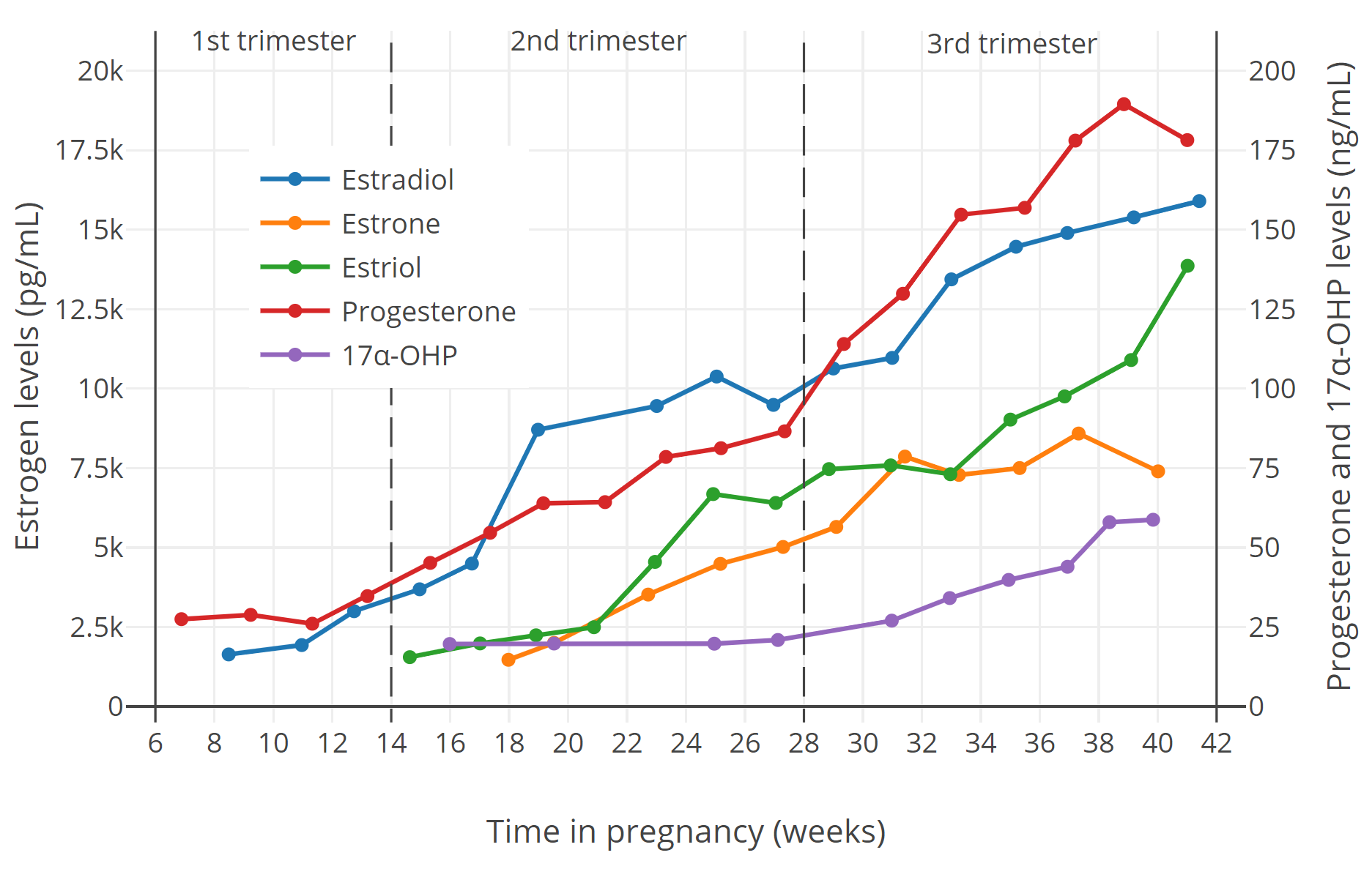
Progesterone in Early Pregnancy: A Vital Hormone for a Healthy Gestation
Introduction
Progesterone, a steroid hormone produced by the corpus luteum and later by the placenta, plays a pivotal role in establishing and maintaining a successful pregnancy. Its levels surge during the luteal phase of the menstrual cycle, preparing the uterine lining for implantation. Once pregnancy occurs, progesterone continues to rise, reaching peak levels in the second trimester. This surge is essential for various physiological adaptations that support fetal growth and development.
Role of Progesterone in Early Pregnancy
1. Endometrial Transformation:
Progesterone stimulates the transformation of the uterine lining (endometrium) into a receptive environment for embryo implantation. It promotes the growth of glandular tissue and blood vessels, creating a nutrient-rich environment for the developing embryo.
2. Uterine Relaxation:
Progesterone inhibits uterine contractions, preventing premature labor. It relaxes the uterine smooth muscles, allowing the uterus to expand and accommodate the growing fetus.
3. Cervical Mucus Changes:
Progesterone thickens and reduces the amount of cervical mucus, creating a barrier against ascending infections and preventing sperm from entering the uterus.
4. Immune Modulation:
Progesterone modulates the immune system, creating an environment conducive to pregnancy. It suppresses the maternal immune response to prevent rejection of the semi-foreign fetus.
5. Breast Development:
Progesterone, along with other hormones, stimulates the development of the mammary glands, preparing them for lactation.
6. Blood Volume Expansion:
Progesterone increases blood volume to meet the increased metabolic demands of pregnancy. It promotes vasodilation and reduces blood pressure, facilitating blood flow to the uterus and placenta.
7. Fetal Development:
Progesterone supports fetal development by promoting placental growth and function. It enhances nutrient and oxygen exchange between the mother and fetus.
Monitoring Progesterone Levels
Measuring progesterone levels in early pregnancy is crucial for assessing the health of the pregnancy and identifying potential complications. Blood tests are typically used to determine progesterone levels.
Normal Progesterone Levels in Early Pregnancy
Progesterone levels vary throughout early pregnancy. Generally, levels should be:
- Week 4-5: 5-25 ng/mL
- Week 6-8: 10-40 ng/mL
- Week 9-12: 15-50 ng/mL
Low Progesterone Levels in Early Pregnancy
Low progesterone levels in early pregnancy can indicate:
- Luteal Phase Defect: A condition where the corpus luteum does not produce enough progesterone.
- Ectopic Pregnancy: A pregnancy that occurs outside the uterus.
- Threatened Miscarriage: A condition where there is a risk of miscarriage.
High Progesterone Levels in Early Pregnancy
High progesterone levels in early pregnancy can be associated with:
- Multiple Pregnancy: Carrying more than one fetus.
- Hydatidiform Mole: A non-viable pregnancy where the placenta develops abnormally.
Progesterone Supplementation
In certain cases, progesterone supplementation may be necessary to support early pregnancy. This is typically recommended for women with a history of recurrent miscarriages or luteal phase defects. Progesterone supplementation can help:
- Increase endometrial receptivity: Improve the chances of embryo implantation.
- Reduce uterine contractions: Prevent premature labor.
- Enhance placental function: Support fetal growth and development.
Conclusion
Progesterone is a vital hormone that plays a multifaceted role in early pregnancy. Its surge during this critical period ensures the establishment and maintenance of a healthy pregnancy. Monitoring progesterone levels and providing supplementation when necessary can help prevent complications and promote a successful gestation. Understanding the role of progesterone empowers expectant mothers and healthcare providers to optimize the health of both the mother and the developing fetus.